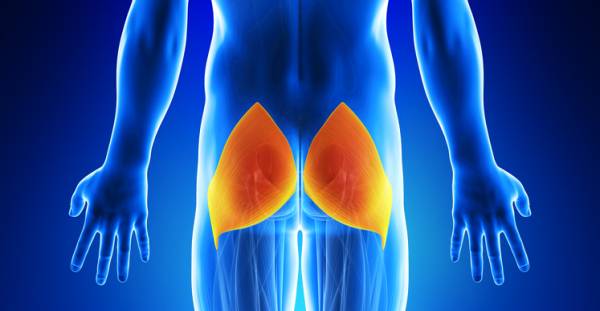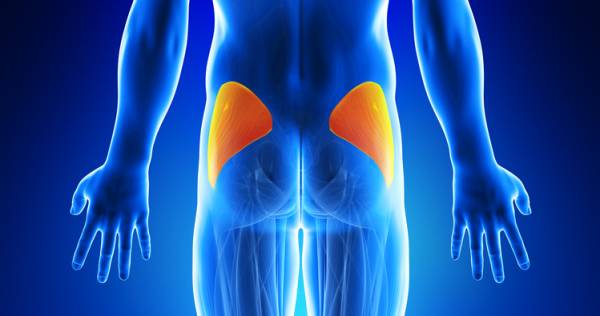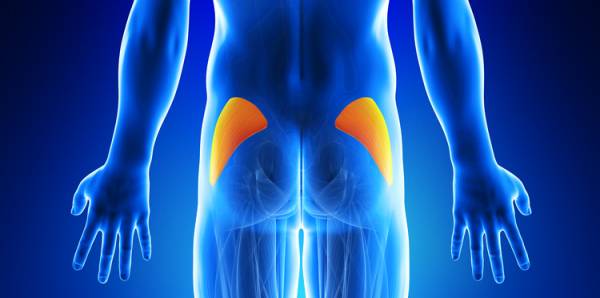Your glutes are not as strong as you think they are. Most athletes think they have strong glutes, backing it up by saying, “I can squat [X] amount of weight.” The truth is you may be able to squat a house, but that does not mean your glutes are strong or even contracting optimally.
Your glutes are not as strong as you think they are. Most athletes think they have strong glutes, backing it up by saying, “I can squat [X] amount of weight.” The truth is you may be able to squat a house, but that does not mean your glutes are strong or even contracting optimally.
Without proper glute function your movements in Brazilian jiu jitsu are not as efficient and your risk for injury goes up. In order to stabilize the knee joint the quadriceps, hamstrings, and glute muscles must all work together. When one group of muscles is working harder than the other, the chance of injury goes up.
In most athletes, improving the strength in their glutes improves performance. Their numbers on the squat and deadlift will jump up rapidly. They will feel quicker or more explosive when training BJJ. But, in order to properly strengthen the glutes we must first understand what they do.
Structure and Function
The gluteus maximums, gluteus medius, and gluteus minimis collectively form the muscles of the “glutes.” All of the glutes have a set of functions they are designed to perform. Most people think of working their glutes for aesthetic reasons, such as shaping your butt. But our glutes can look good and still lack the ability to function properly.
Gluteus Maximus

The gluteus maximus is the most well known of all the glute muscles. It is also the biggest in size (hence, “maximus”). The gluteus maximus originates from the ilium posterior to posterior gluteal line, the dorsal surface of the sacrum and coccyx and subcarotuberous ligament. Most of the muscle fibers of the gluteus maximus insert into the iliotibial tract (IT band), which then inserts into the lateral condyle of the tibia. Some of the fibers attach to the gluteal tuberosity of the femur.
A lot of people do not make the connection between the gluteus maximus and the knee. Since the glute max inserts into the Iliotibial tract a problem in the glutes can affect the knee. The main job of the glute max is hip extension, but it also assists with lateral rotation.
Gluteus Medius

The gluteus medius is the second largest muscle and is located under the gluteus maximus. It originates from the external surface of Ilium between anterior and posterior gluteal lines. It then inserts into the greater trochanter of the femur. The gluteus medius functions to abduct the hip and medially rotate the thigh. In addition, the gluteus medius functions as a lateral hip stabilizer.
Gluteus Minimus

The gluteus minimus originates between the external surface of Ilium between anterior and inferior gluteal lines. It then inserts into the greater trochanter of the femur. The gluteus minimus teams up with medius to help it with abduction of the hip and medial rotation of the thigh.
The Problem With Weak Glutes in BJJ
Based on the function of the glute muscles, if you are lacking strength, then you will have a hard time stabilizing your hip and will have limited internal rotation and hip extension. From a performance standpoint, you may experience pain in your low back and or knees. You strength will also decrease in movements involving the glutes, such as standing up in the guard or balancing when your opponent is attempting to sweep you.
How to Activate Your Glutes for Training
Before more strenuous activity, such as a Brazilian jiu jitsu class or a weight-training session, use the sequence below as a warm up to get your glutes firing:
- Monster Walk (walk forward with band placed around your knees) – Walk backwards and forward for as many steps as you need to feel your glutes burn.
- Sumo Walk (side walk with band placed around your knees) – Walk side-to-side for as many steps as it takes to feel your glutes burn.
- Single Leg Glute Bridge – 2 sets of 5-10 repetitions each leg.
Repeat this sequence as many times as needed for you to feel warmed up.

Single leg glute bridge.
No Buts About Your Butt
Ironically, the most important muscle can often be the weakest one. Especially in a sport like BJJ where you have to use every muscle in your entire body. Spend some time before each training session to make sure your glutes are firing properly. Doing so will improve your performance and keep you on the matts by reducing injury.
References:
1. K. L. Moore and A. F. Dalley, Clinically Oriented Anatomy, 4th Edition, (Philadelphia: Lippincott Williams & Wilkins, 1999).
Photo 1 courtesy of Ana Nieves.
Photos 2-4 courtesy ofShutterstock.






